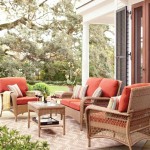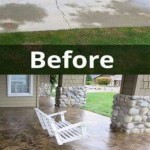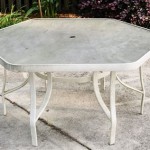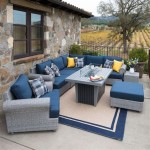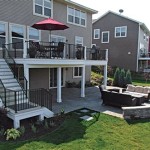How To Enclose A Patio For Cats
Cats, with their innate curiosity and love for exploring, often crave outdoor adventures. However, concerns about safety, especially for indoor cats, can make it difficult to grant them access to the outside world. Enclosing a patio offers a safe and controlled environment where cats can enjoy fresh air, sunshine, and the sights and sounds of nature.
Building a cat-friendly patio enclosure requires careful planning and consideration of various factors. This article will guide you through the process, outlining key steps and considerations for creating a secure and enjoyable space for your feline companions.
1. Planning and Design
Before starting construction, carefully assess the existing layout of your patio and plan the enclosure's design. This encompasses choosing the materials, determining the size, and considering the cat's needs.
Choosing Materials
The material used for the enclosure should be strong, durable, and safe for cats. Popular options include:
- Wire mesh: A widely used material for cat enclosures, offering good visibility and ventilation. Choose a sturdy mesh with small openings to prevent cats from escaping or getting their heads stuck.
- Solid panels: Panels made of wood, metal, or plastic can add privacy and security to certain areas of the enclosure. Ensure these panels are tall enough to prevent cats from climbing over them.
- Clear polycarbonate: This transparent material allows excellent visibility and sunlight penetration, providing a bright and airy feel. However, it may need additional reinforcement for stability.
Determining Enclosure Size
The size of the enclosure should be adequate for your cat to move freely and comfortably. Consider the number of cats you have and their activity levels. A minimum of 10 square feet of space per cat is recommended, but more is always better.
Cat-Friendly Features
Include features that enhance the cat's experience and make the enclosure more enriching.
- Climbing platforms: Provide perches and shelves for cats to climb and observe their surroundings.
- Scratching posts: Install scratching posts to satisfy their natural instinct and protect furniture.
- Sheltering areas: Offer shaded areas with cozy beds or hideaways for cats to retreat when they need privacy.
- Plants: Include cat-friendly plants to enhance the enclosure's aesthetics and provide visual stimulation.
2. Construction and Installation
Once you have a design plan, construction and installation can begin. This involves selecting the appropriate tools, assembling the enclosure, and securing it to the patio.
Tools and Materials
Gather the necessary tools for building the enclosure. These may include:
- Power drill
- Screwdriver
- Measuring tape
- Level
- Saw (for cutting wood or metal)
- Safety glasses
- Gloves
- Fasteners (screws, nails, etc.)
- Optional: Concrete mixer for securing posts to the ground
Assembling the Enclosure
Assemble the enclosure according to your design. This may involve attaching mesh panels to posts, installing solid panels, or attaching polycarbonate sheets to a frame. Ensure all connections are secure and stable.
Securing the Enclosure
Secure the enclosure to the patio for safety and stability. This may involve:
- Attaching to existing structures: Attach the enclosure to the patio's walls, posts, or deck using sturdy fasteners.
- Ground-mounted posts: Secure posts to the ground using concrete for extra stability. Ensure the posts are deep enough to withstand wind and potential digging attempts by cats.
- Roof support: If installing a roof, ensure it is securely attached to the enclosure walls and posts.
3. Safety and Maintenance
After construction, ensure the enclosure is safe and provide regular maintenance to ensure its longevity and your cat's well-being.
Safety Checks
Before introducing your cat, conduct a thorough safety inspection.
- Check for sharp edges: Ensure all metal parts have smooth edges to prevent injuries.
- Inspect for gaps or holes: Close any gaps or holes in the enclosure that could allow cats to escape or predators to enter.
- Verify door latch: Ensure the door latch is secure and cannot be easily opened by your cat.
- Test for structural stability: Check that the enclosure is sturdy and can withstand wind and potential climbing by cats.
Maintenance
Regular maintenance is crucial for maintaining the enclosure's integrity and safety. This includes:
- Cleanliness: Keep the enclosure clean by removing debris and waste regularly.
- Insect control: Treat the enclosure for insects or pests to protect your cat from bites and diseases.
- Repair and replacement: Repair or replace any damaged parts to ensure the enclosure remains safe and secure.

Where Can You Build A Catio Spaces

All About Catios Cat Enclosures Catio Spaces

All About Catios Cat Enclosures Catio Spaces

An Enclosed Deck Just For The Kitties Cat Patio Enclosure Outdoor House

All About Catios Cat Enclosures Catio Spaces

Catio S Cat Highways And Shelves Oh My Friendship Hospital For Animals

Porch Catios Cat Porches Catio World

Diy Catio Materials How To Pick The Right Cat Enclosure Mesh For Your Spaces

Diy Catio Materials How To Pick The Right Cat Enclosure Mesh For Your Spaces

Catio 101 Tips To Create Outdoor Cat Enclosures For Your Bechewy

